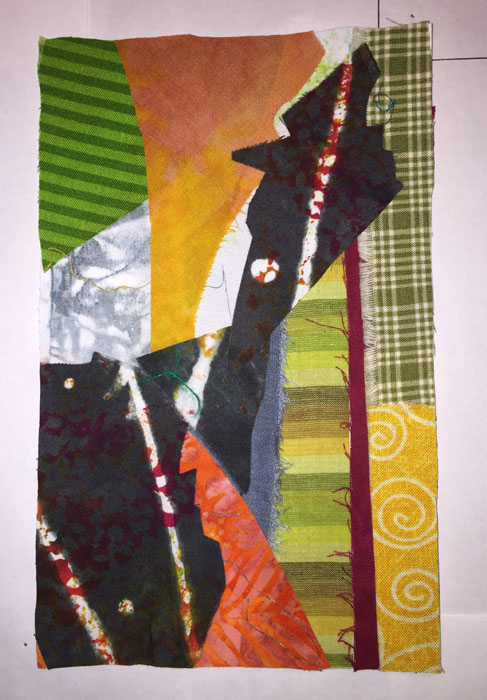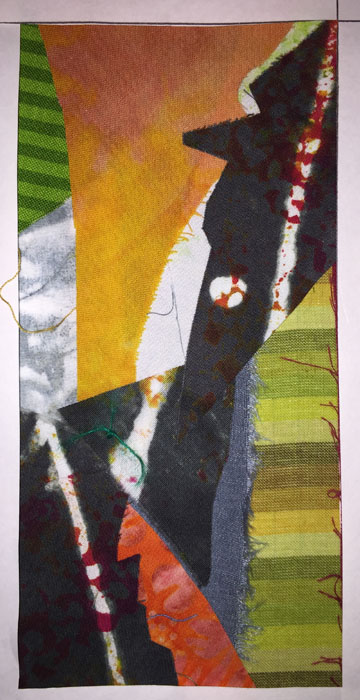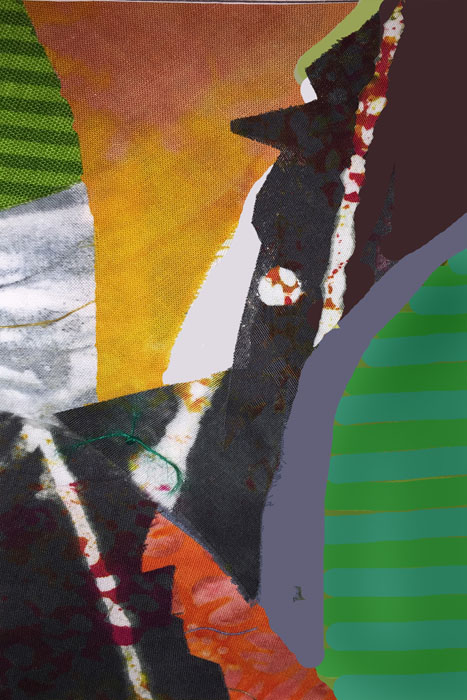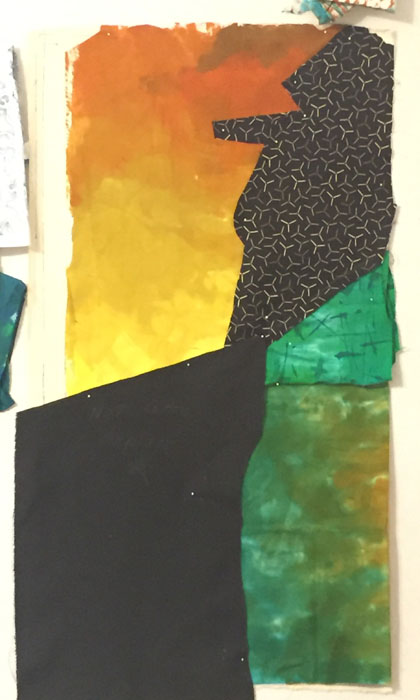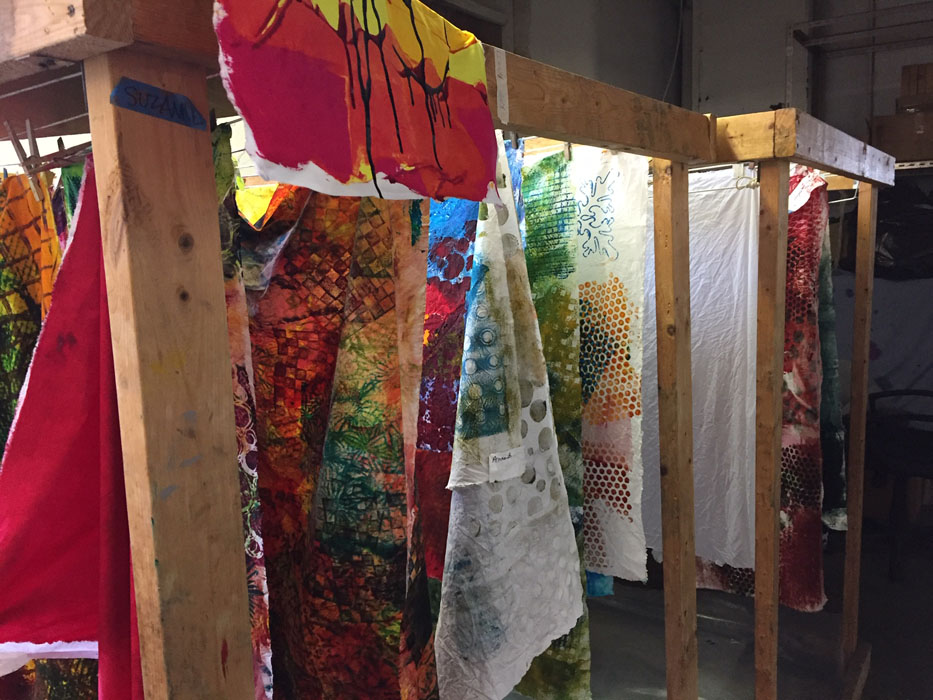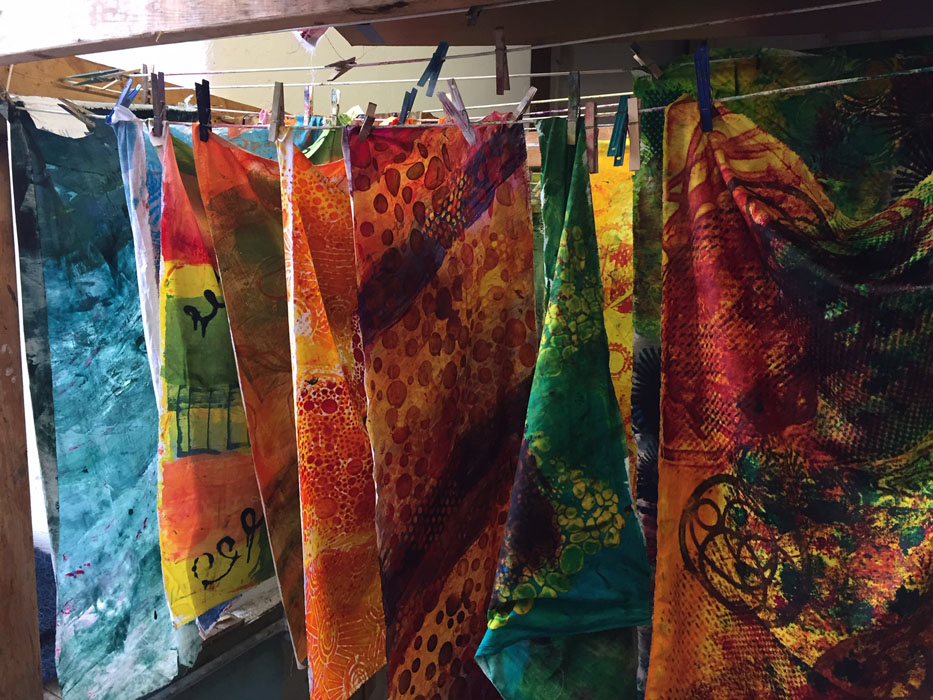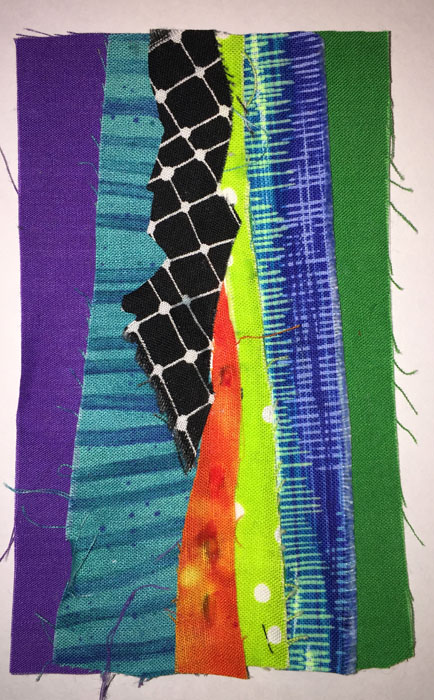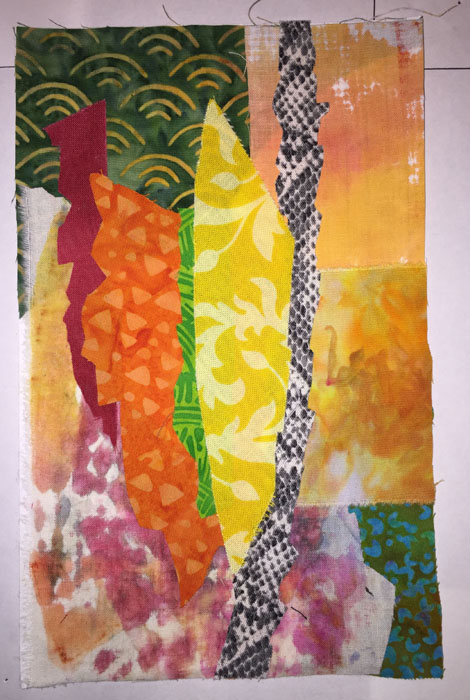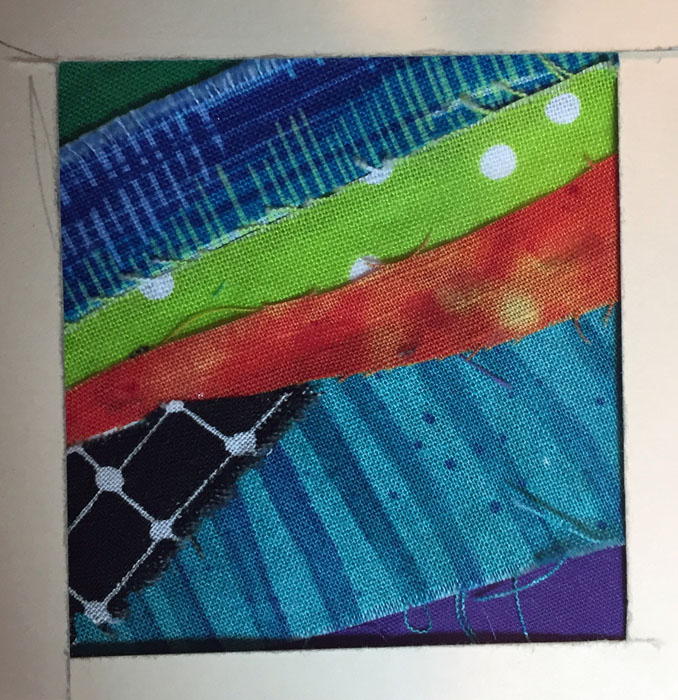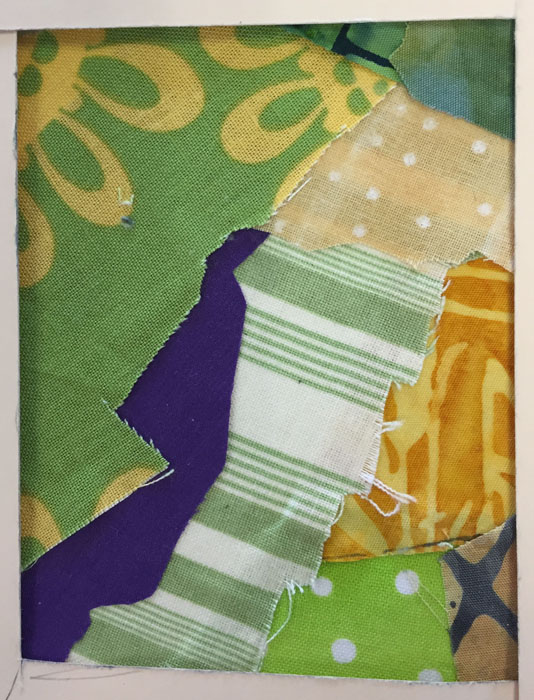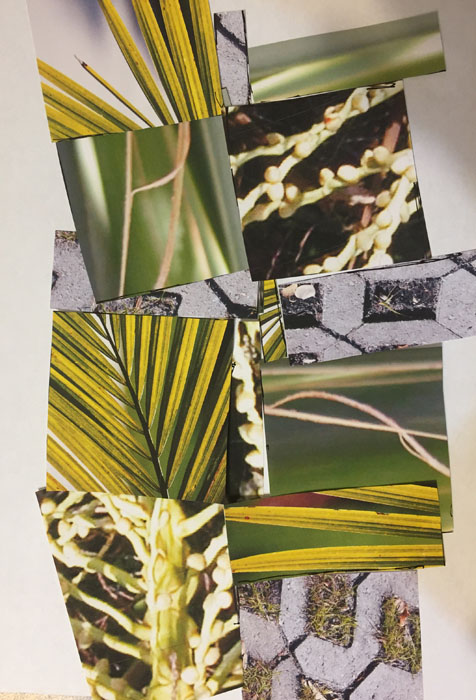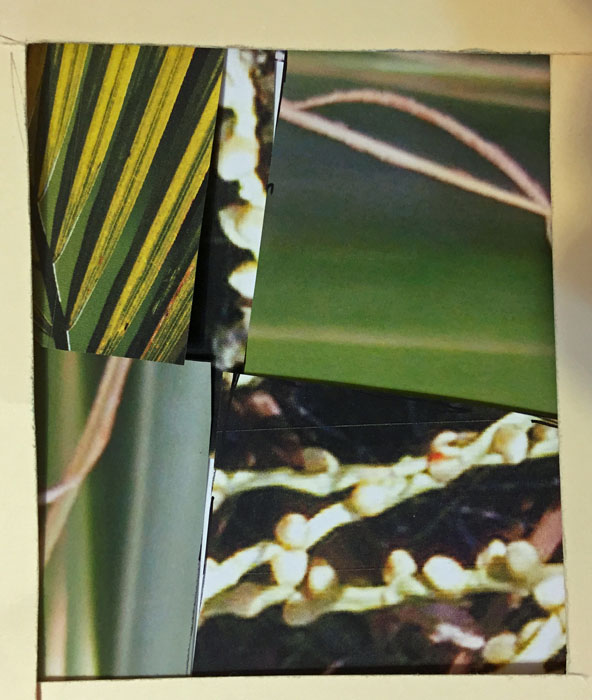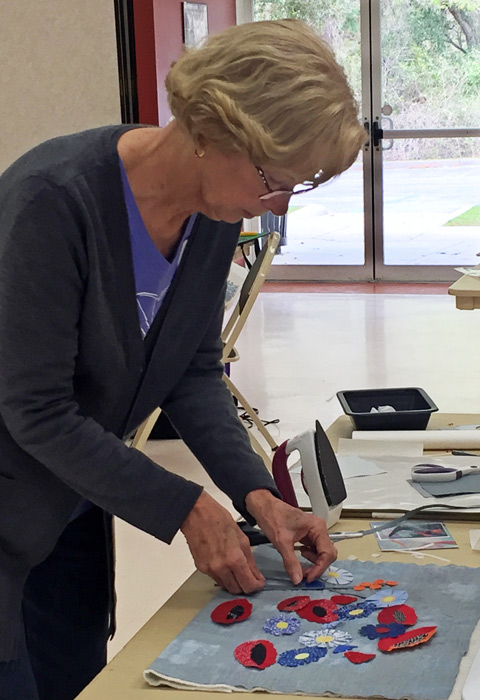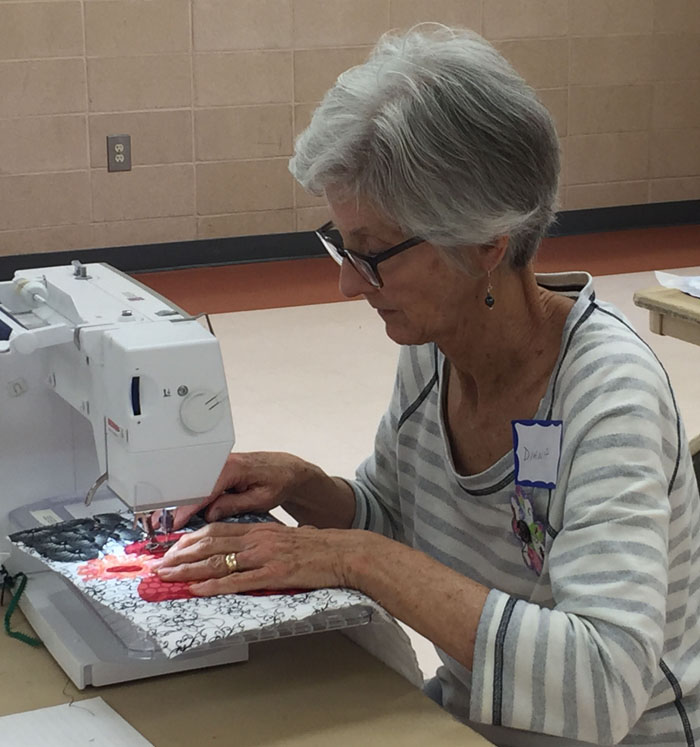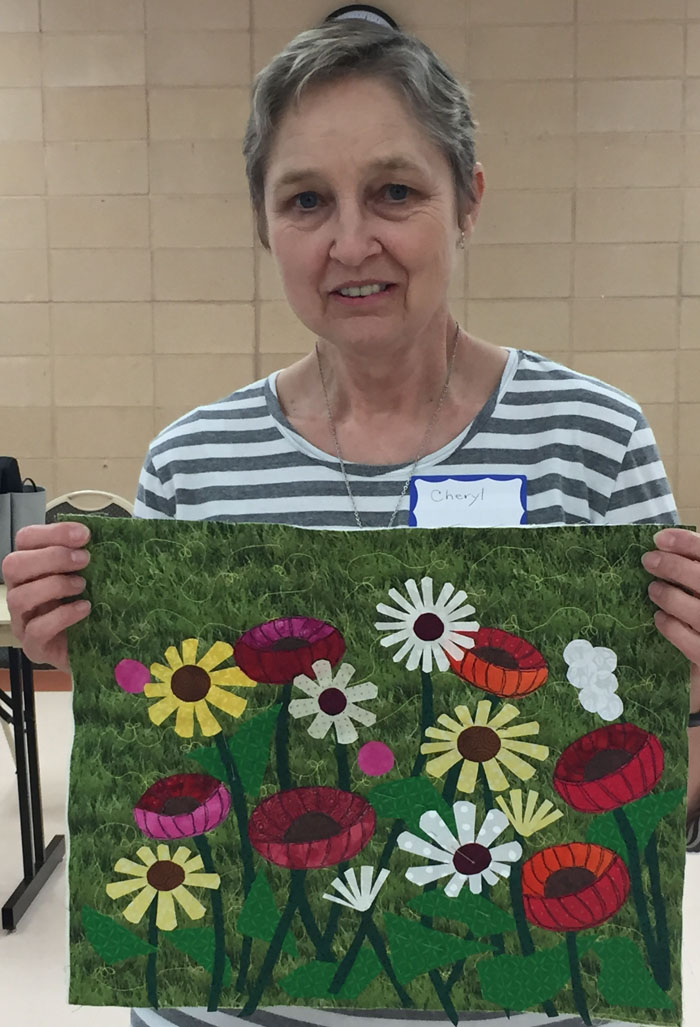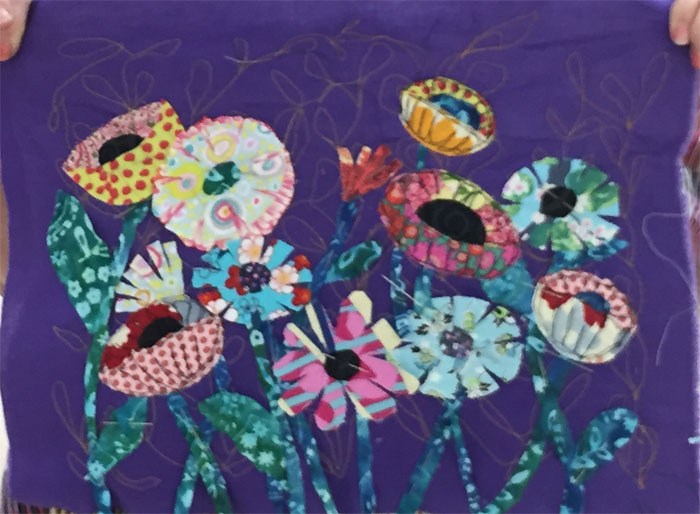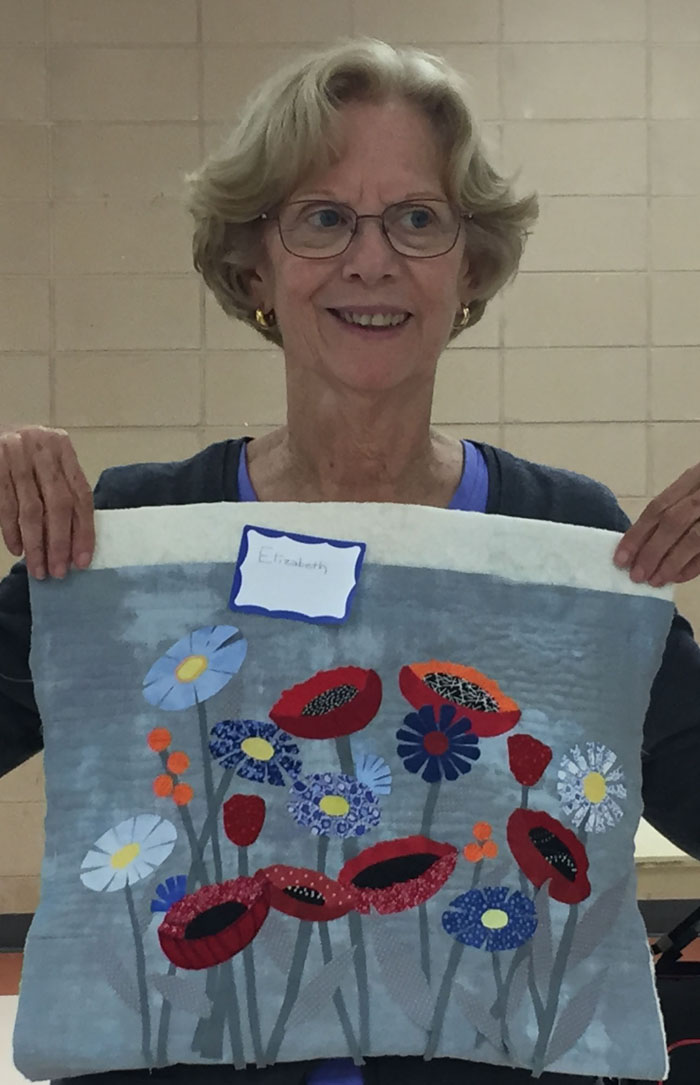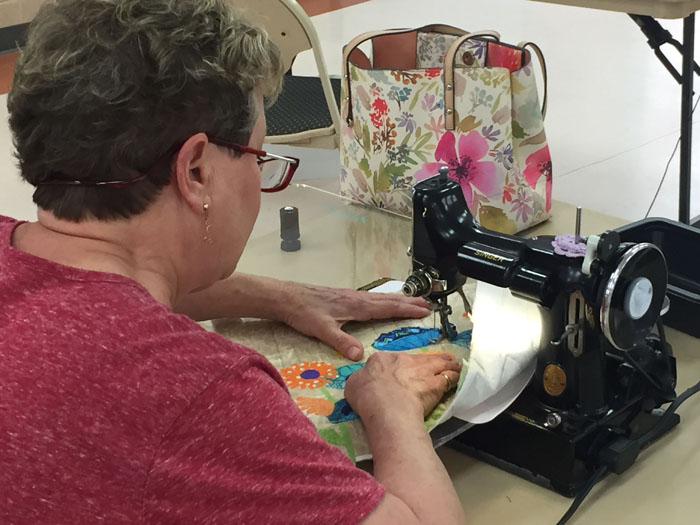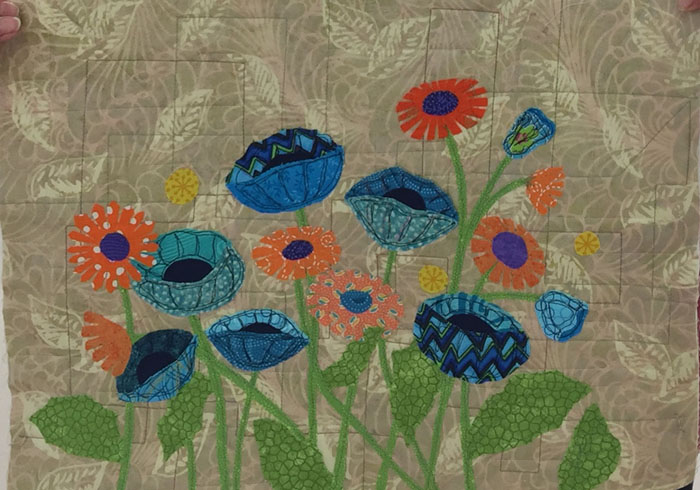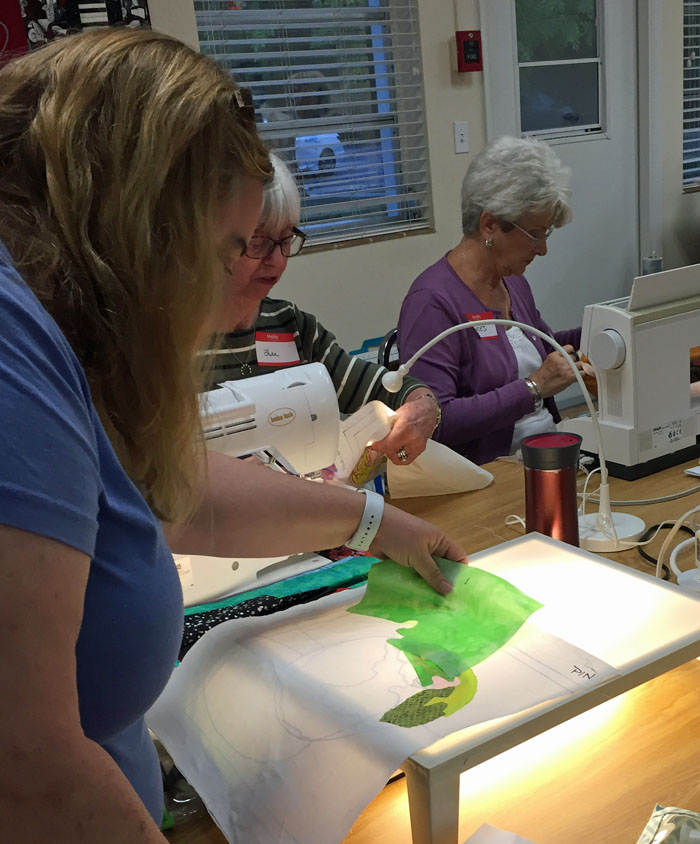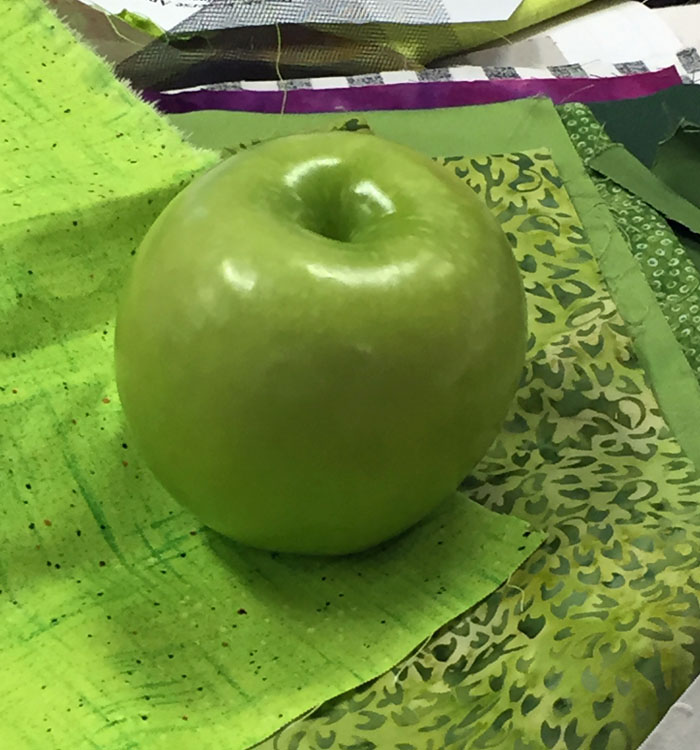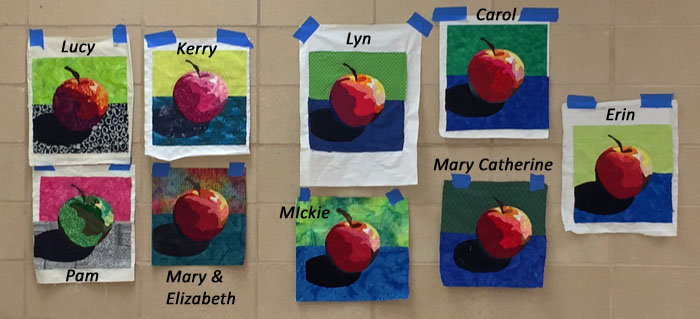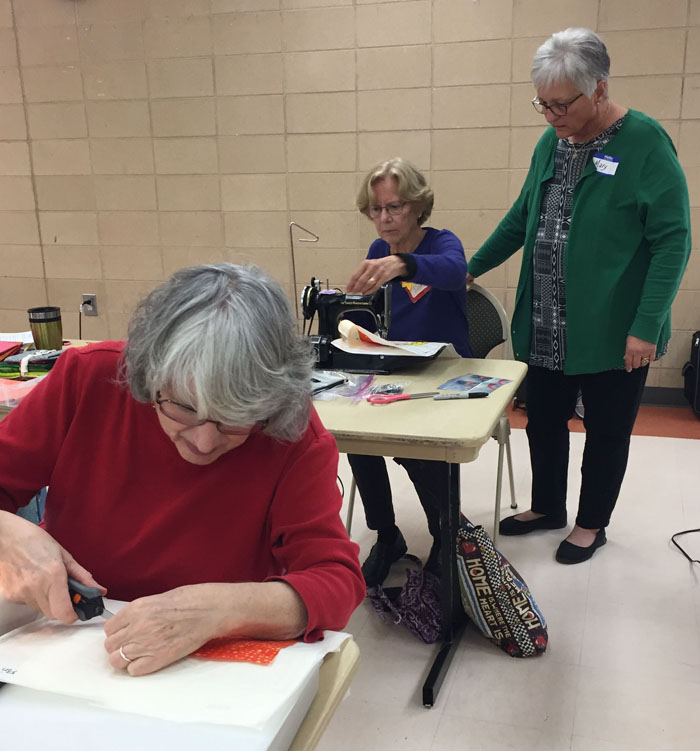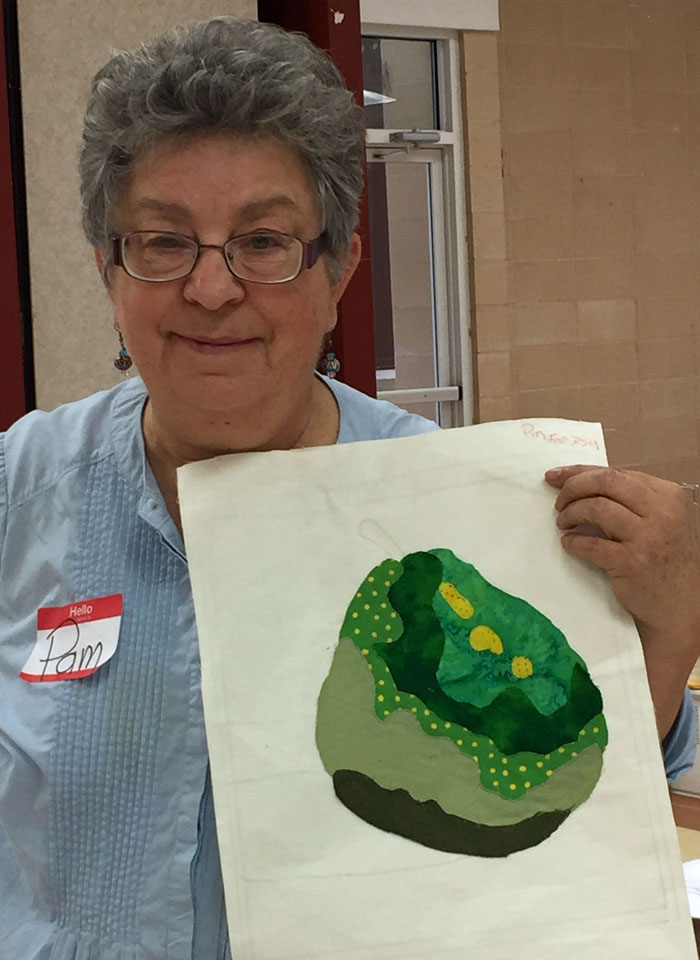In an earlier post, I showed you a quick exercise for generating abstract designs. After making several “postcard collages” I decided to use one of them to create a quilt.
This was the original collage.
I cropped it and got this. I think it’s much more dramatic skinny like this.
I played with it just a little bit on the computer and got this as my sketch.
But, oops, I had lost the skinny drama, so I had to change that back.
Next, I pulled out hand dyed fabrics, and others, to see if I had what I needed. Yes, I thought I could make it work.
I placed a piece of muslin on my design wall and drew out my planned size. Then, I started working on the large black shapes. I figured they were the keys to the whole design, so I needed to get them in place first. Since I work in raw edge collage it’s a simple matter to cut the fabrics to shape and place them.
Later fabrics were tucked under the adjacent black.
Since all the designing had been done beforehand, and because I was working with fairly large shapes, it came together pretty quickly.
How do you like my visual cropping tool, above? That’s right, it’s toilet paper.
At this point, it was ready for a light gluing and then on to stitching. I’ll show you how I tackled that in the next post.
Ellen Lindner
P.S. What construction tricks do you have?

